A charming and sophisticated destination that welcomes visitors with open arms.
Over the centuries, it has inspired musicians, artists, and filmmakers, earning a reputation as a city of music, enchanting gardens, and breathtaking views.
Here are 10 tips to help you feel at home while exploring this magnificent corner of Italy.
Find more about what to do in Ravello like a local, according to Visit Italy.
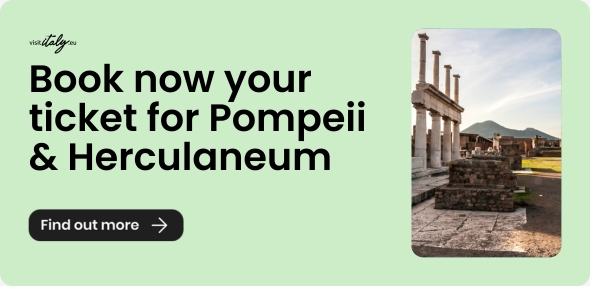
Tips to explore Ravello like a local
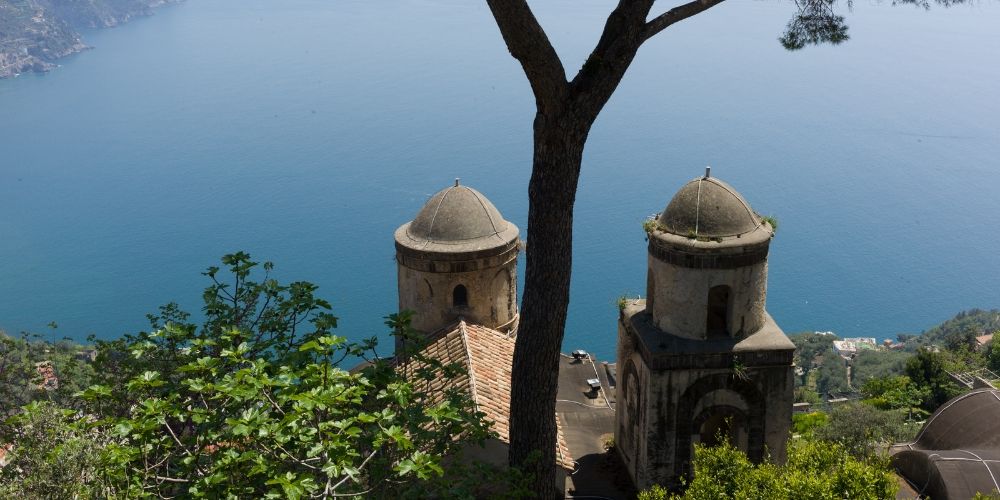
From the Belvedere dell'Infinito, the idea of ‘infinity’ suddenly feels tangible: impossible to describe, but unmistakably there. That’s the magic of beauty: it speaks without needing words.
Since its founding in the 5th century, Ravello has cast a quiet spell over all kinds of travellers. It inspired William Turner, offered refuge to Winston Churchill, became home to Gore Vidal and a romantic escape for Greta Garbo.
Nevertheless, you don't need a renowned name to appreciate this small treasure on the Amalfi Coast.
Its gardens, those of Villa Cimbrone and Villa Rufolo, are among the main reasons to visit Ravello. But there's also the music scene, the casual and soft old-town Mediterranean vibes, the world-class views, and the scents (and flavours) of Amalfi lemons all around.
Here are some tips for visiting Ravello like a local and discovering one of the most fascinating places in an exceptional region.
10. What to do in Ravello like a local. Attending a concert
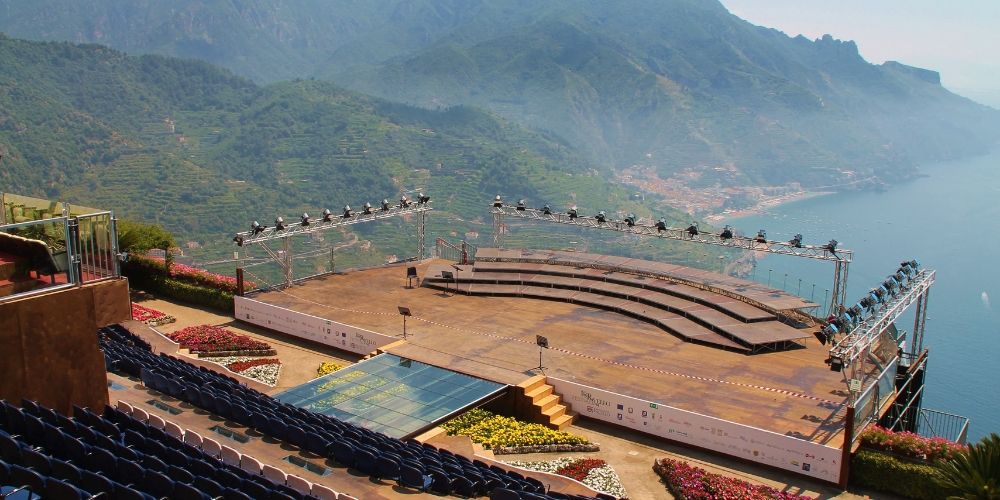
This town has long enchanted artists, poets and dreamers. In 1880, Wagner turned up on the back of a mule, and promptly declared that the "Magic Garden of Klingsor is found", having seen his Parsifal come to life before his eyes.
Since then, Ravello has always had a special bond with music, celebrated yearly with an exceptional event in a chosen setting: the extraordinary belvedere in Villa Rufolo.
The Ravello Festival features some of the most talented international orchestras. The repertoire changes from year to year, ranging from classical to jazz.
The most anticipated and atmospheric concert takes place at dawn. Tickets can be booked directly via the festival’s official website, but be quick: they tend to sell out within hours of release.
Trip to Ravello from Naples9. Shopping in local boutiques

For a spot of local shopping, head to the tiny botteghe and tucked-away boutiques in Ravello’s historic centre.
One of the highlights of Ravello's craftsmanship is ceramics. Shop windows overflow with hand-painted plates, salad bowls and espresso cups, all lovingly made in the studios just behind the storefronts.
Ravello artigianato also includes coral and cameos. You can delve into it at the Museo del Corallo in Piazza Duomo. Inside, you’ll find centuries-old techniques used to craft delicate, finely carved jewellery.
The gallery features hundreds of pieces, including an entire nativity scene made from coral. It's a must-visit place if you're interested in art, history, or just beautifully detailed craftsmanship.
Trip to Ravello from Sorrento8. Aperitivo in Piazza Vescovado
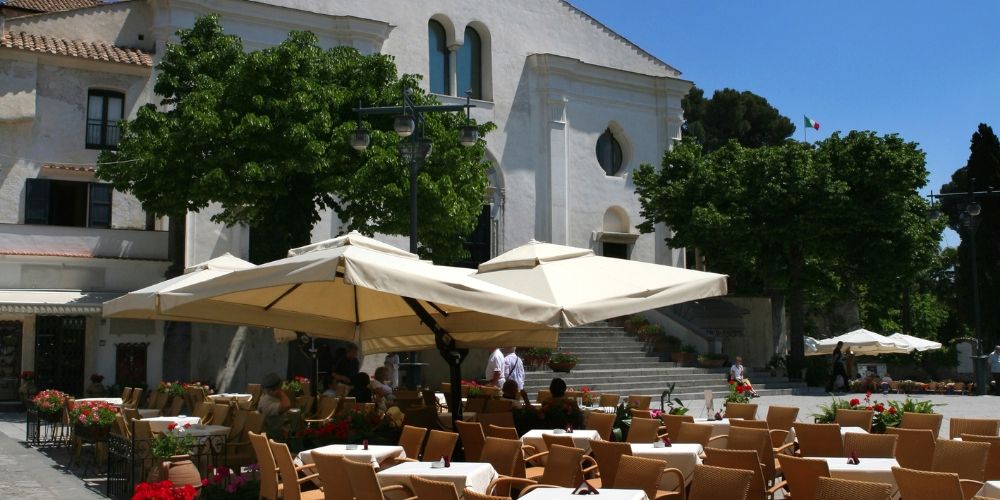
Ravello's old town embodies everything you'd expect from a village on the Amalfi Coast: winding streets lined with small shops and churches overlooking the sea, ceramics adorned with the classic lemon pattern popping up here and there, bottles of limoncello proudly displayed, and an endless sequence of climbs, dips and staircases.
At the centre of it all is Piazza Vescovado, the heart of town and a dreamy spot for a spritz and a few nibbles come aperitivo hour. Daily life drifts by in the shadow of the cathedral, framed by the Episcopal Palace and towering umbrella pines that look out over the sea.
The cafes and restaurants opening into the square are a meeting point for residents and tourists. Once, Humphrey Bogart, Jackie Kennedy, or Gore Vidal could be found sitting at a table sipping a drink. Even today, you may still come across children riding bicycles or playing football in the wide space in front of the church, just like in an old black-and-white film.
Throughout the year, the piazza plays host to Ravello's most beloved events, from July's San Pantaleone festivities to open-air concerts, art shows, food festivals and a candlelit nativity scene at Christmas. There's always something going on.
7. Getting Around by Ferry
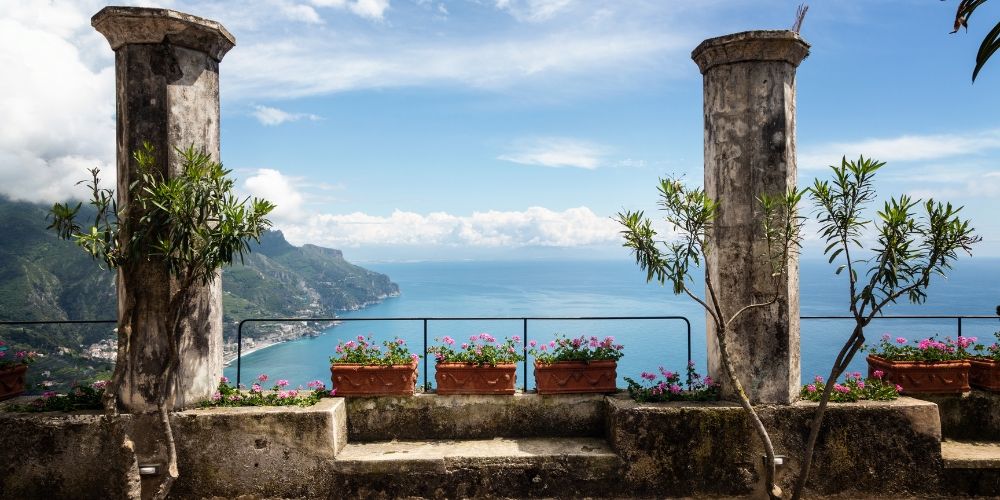
Ferries are the easiest way to get around the Amalfi Coast in summer. Boats depart regularly from Naples, Sorrento, Positano and Salerno. Amalfi is the closest port.
If you prefer travelling by train, reach the Salerno station, then take a bus to Amalfi. Once there, you’ll need to switch again for the final leg up to Ravello.
Keep in mind that Amalfi is the main hub for travelling to/from Ravello using public transportation, so regardless of your destination, you'll likely need to stop here first and catch a SITA bus.
Travelling by car? Take the A3 motorway (Napoli–Salerno) and exit at Angri, then follow signs to the Amalfi Coast and Ravello. However, be aware that finding parking could be quite challenging during peak season.
Driving a car might result in getting stuck in traffic for a long time. It's better to rent a scooter, rely on public transport, or walk where possible and take advantage of the scenic routes winding between the mountains and the coast. Find more about this topic at point 5.
See also our tips for moving between Ravello and Amalfi.
6. Taking a Beach Break
Ravello's closest beach, Spiaggia di Castiglione, sits right on the border with Atrani and boasts breathtaking scenery. Sheltered by a rocky promontory and a vibrant vegetation, it's not very large, with a mix of free beach and serviced lido areas. Generally, it isn't so crowded.
To reach it, you can either take a scenic boat ride or make the descent on foot. Keep in mind that Ravello is perched around 350 meters above sea level, so be prepared for quite a few steps to walk.
The location is truly unique and picturesque, flanked on one side by the elegant buildings of Ravello and on the other by the silhouette of Atrani, with the Santa Maria Maddalena church and its towering bell tower standing out.
It's best to visit in the morning: the sun dips behind the cliffs in the afternoon, leaving much of the beach in shade.
P.S. We also have a selection of the best beaches on the Amalfi Coast.
5. Hiking on a scenic trail
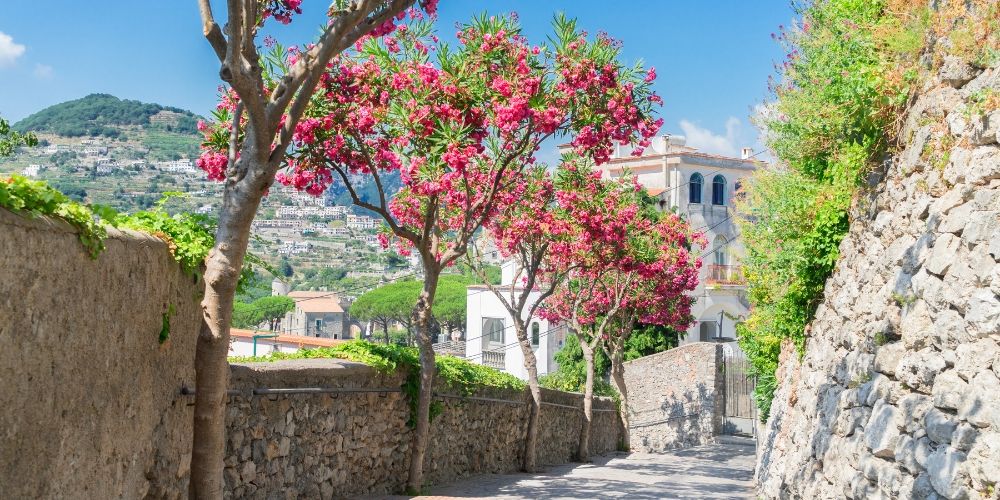
An excellent way to explore the neighbouring towns is by traversing its ancient narrow and steep pathways, just as the locals did in the past before the coastal road was built.
The landscapes are spectacular and steeped in history. The most famous of them conjures up epic visions.
Atrani, Amalfi, and Minori are all seaside towns that are easy to reach. Of course, the return journey might be more challenging, but you can always opt for a bus ride back.
The walk to Amalfi takes about an hour, as does the stroll to Minori. Heading up to Scala, however, is steeper and more challenging. Also, you could intersect the scenic Lemon Path, fragrant like the citrus groves it's named after.
4. Eating Scialatielli
Exploring the Amalfi Coast is enchanting and exhilarating, but oh, what a workout! After all that up and down, it's time to refuel like a local.
As expected, the local cuisine pays homage to the Mediterranean Sea with plenty of fresh seafood on the menu. But also the unique anchovies of Cetara, ndunderi (handmade pasta from Minori), Amalfi lemon spaghetti, or the fancy sole nel piatto, a local lemon soufflé beloved by Nobel prize winner Salvatore Quasimodo.
As for Ravello's exclusive tradition, pasta with zucchini is mandatory during the celebrations for San Pantaleone, on July 27.
Not sure where to start? Go for scialatielli, a typical fresh pasta format popular on the Amalfi Coast. Its name is evocative and comes directly from the dialect: for some, it means "enjoyment" (from Neapolitan "scialare"). One bite and you’ll see why!
3. Catching a theatre performance in the cloister of San Francesco
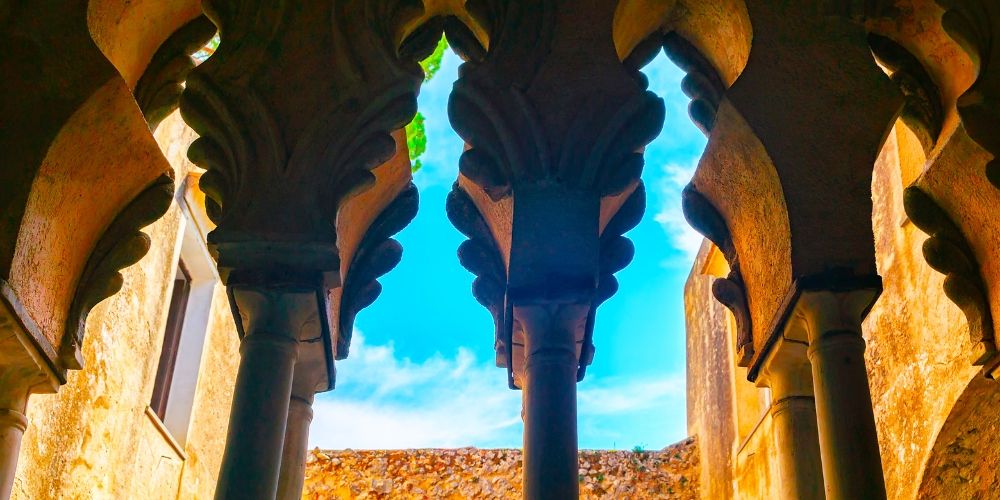
Come summer, the cloister of San Francesco transforms into an open-air stage for intimate theatre shows, poetry readings, and the occasional dance or music performance.
These events are rarely advertised, but that’s part of the charm: they’re low-key, much-loved by locals, and set in one of Ravello’s most atmospheric (and quietly spiritual) corners.
Alongside the convent and its adjoining church (final resting place of Blessed Bonaventura from Potenza), the Franciscan complex houses a true hidden gem: a precious library with around 40,000 volumes.
Opened to the public in 1984, it features rare 16th-century editions, ancient manuscripts and ornately illuminated choral books. Talks, concerts and cultural events are regularly held in the Aula Magna. Best of all, entry is completely free.
2. Joining a local festival (even off-season)

Beyond the highbrow glamour of the Ravello Festival, the town’s calendar is dotted with smaller, wonderfully homespun events: village processions, food fairs, and impromptu concerts in tucked-away piazzas.
These are the moments when Ravello feels most real. It’s your chance to blend in with the locals and get a genuine taste of small-town life on the Amalfi Coast: no filter, no frills, just pure, unpolished charm.
Even in winter or early spring, there are plenty of opportunities to tap into the rhythm of local life. Ravello doesn’t hibernate when the festival crowds disappear, but it keeps ticking all year round.
If you happen to be here in July, don’t miss the lively Festa di San Pantaleone, the town’s patron saint celebration on the 26th and 27th. The highlight is the miracle of the liquefaction of the saint’s blood, a treasured relic kept in the town’s Duomo. Alongside the solemn religious rituals, the festa spills into the streets with food stalls, music, fireworks, and lively chaos.
In September, the not-to-be-missed event is l’Incendio di Torello (Torello fire). In honour of Our Lady of Sorrows, the tiny village lights up with a dazzling fireworks display choreographed to music. For a few surreal minutes, it looks like the houses are on fire in a burst of colour and light. The best view? Head to one of Ravello’s terraces and prepare to be wowed.
1. Visiting a local dairy for a mozzarella masterclass
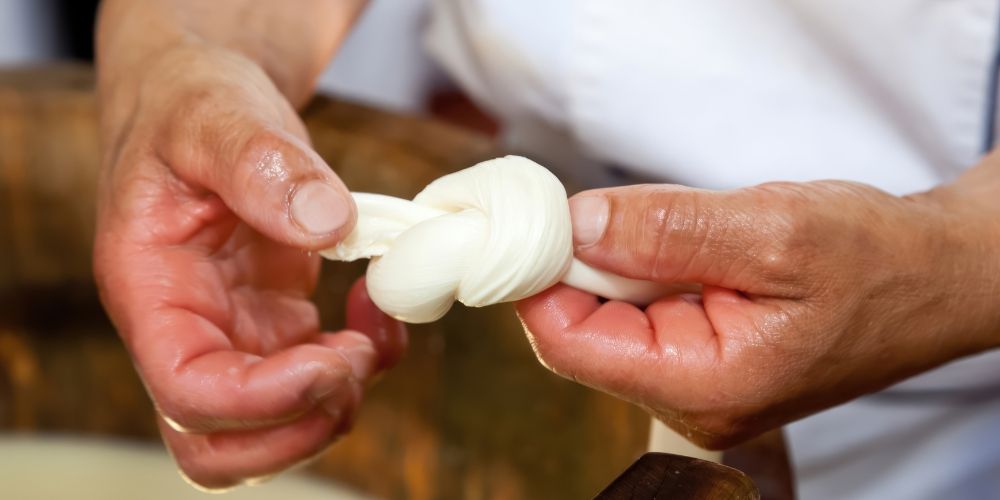
One of Campania's most iconic foodie treasures? Fior di latte from the nearby Monti Lattari. The good news is you don't need to stray far from Ravello to see how this creamy wonder is made and to taste it at its freshest.
One of the Amalfi Coast's last remaining artisanal dairies is sited in Piazza Fontana Moresca. It's so good that even the BBC came calling in 2023 to spotlight the skill of the local cheesemakers and the centuries-old traditions behind their craft.
If you're up for rolling up your sleeves, join their mozzarella-making masterclass: it will be a fun and deliciously satisfying experience. You'll follow every step of the process with the owners themselves, learning how this melt-in-your-mouth cheese comes to life. And yes, there's a tasting at the end.
About the author
Written on 13/02/2024


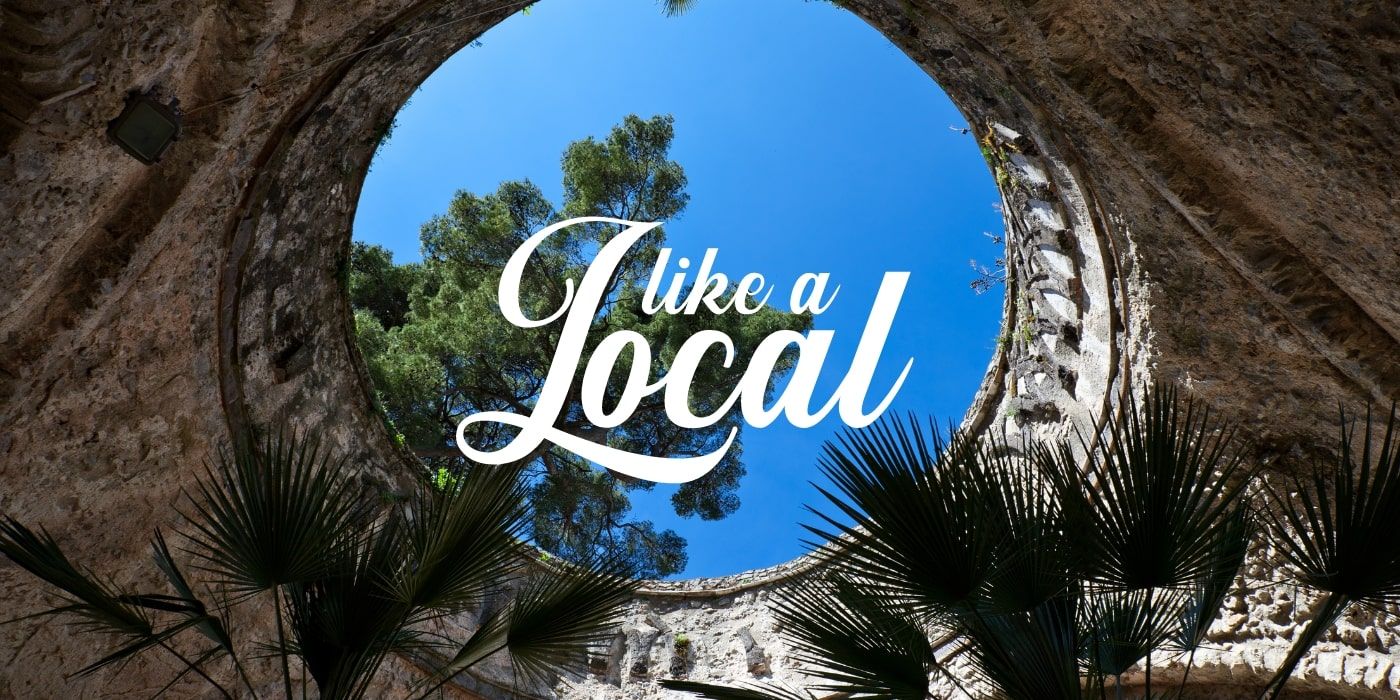

Lorena Calise
Visit Ravello like a local. Here is what to do and see in one of the most beautiful villages on the Amalfi Coast.